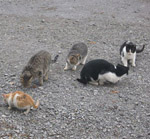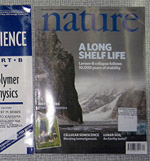The impacts of wild horses on a desert ecosystem
 Mammals
Mammals  Feral horses on BLM land in Southeastern Oregon.Bands of wild horses roaming the remote deserts of the southwestern United States conjure up an iconic image in many people's minds. But for conservationists, the introduced equines have fueled controversy over their impacts to desert ecosystems.
Feral horses on BLM land in Southeastern Oregon.Bands of wild horses roaming the remote deserts of the southwestern United States conjure up an iconic image in many people's minds. But for conservationists, the introduced equines have fueled controversy over their impacts to desert ecosystems.
A new study has found that a small band of horses (less than 30) have created impacts that span a large area within Anza-Borego State Park in Southern California. The wild horses were first introduced to the area in the late 1700's and remained until their removal in 2003.
The study found that the movement of wild horses through the area created extensive trails - measuring at least 25 square kilometers - characterized by reduced vegetation cover and compacted soils.
On the positive side, they found greater plant diversity associated with horse feces and intermediate levels of disturbance to soils. They also found greater macroinvertebrate abundance in horse-impacted areas, although it is unclear whether this is due to better habitat conditions for the species or better detectability due to more bare ground.
Study co-author Stacey Ostermann-Kelm and fellow researchers from University of California Davis, California State parks, and the Conservation Biology Institute looked at five parameters that horses may be impacting through trampling: soil strength, vegetation cover, percent of nonnative vegetation, plant species diversity, and macroinvertebrate abundance. They also looked at the affect of horse feces on plant cover and species diversity (An adult horse deposits an estimated 9145 kg of feces per year - a good piece of trivia for cocktail parties).
They collected data within plots along horse trails, within .3 meters of trails, and in reference sites. Given the extent of the impacts caused by such a small number of animals in the study area, the geomorphologic impacts from wild hoses across the southwest may be substantial. The study authors conclude,
"Our results show that feral horses may cause substantial indirect geomorphic changes...If feral horse populations are maintained within habitat of threatened or endangered species known to be sensitive to loss of vegetative cover (e.g., lizards, grassland birds, and some small mammals), precautions should be taken to avoid impacts to these species. The results from our study should be extrapolated carefully because the impacts of grazing on arid environments are highly influenced by animal density and abiotic factors."
--Reviewed by Rob Goldstein
Ostermann-Kelm, S., Atwill, E., Rubin, E., Hendrickson, L., & Boyce, W. (2009). Impacts of feral horses on a desert environment BMC Ecology, 9 (1) DOI: 10.1186/1472-6785-9-22




Reader Comments